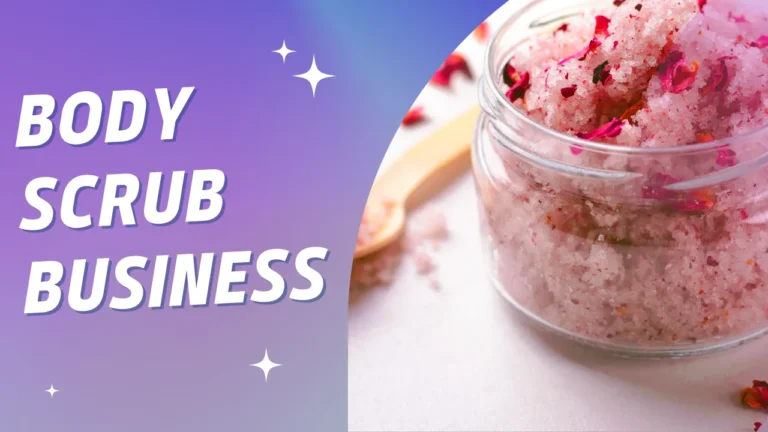Have you ever wondered how to start a flower pot business? Do you have a passion for unique flower pots, craft decoration, and pot designing, and want to turn that passion into a profitable venture?
Starting a flower pot business, not just terracotta or pottery work, think about how they are made, the attractive hand-painted designs, shapes, and eco-friendly wonders.
There are endless possibilities to make a profitable business, and the best part is that you can make money with your creativity, hard work, and mastermind planning.
Requires skills, knowledge, proper resources, marketing strategies, and a target customer base (who want to bring beauty to their homes or gardens) for selling flower pots. The process is simple, but having a great vision, goals, and planning is important.
We will discuss the step-by-step process, outline the roadmap for a successful business plan, and provide all the info that helps every newbie looking to enter the creative field.
So, let’s discuss the complete process in detail.
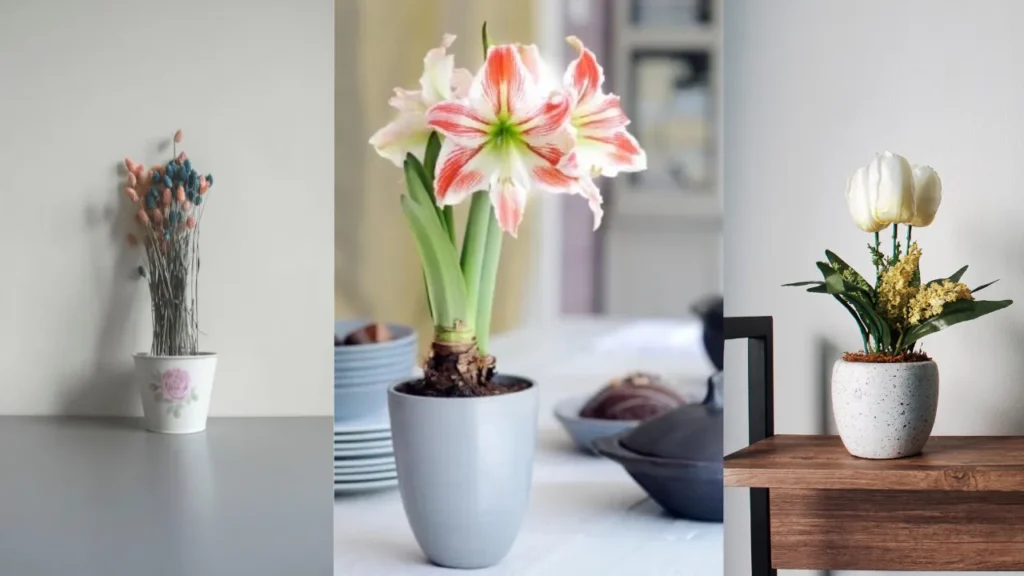
What is a flower pot business?
The concept of a flower pot business is to specialize in production, designing, and selling to the right customer.
Pots are mainly designed for holding and displaying flowers for every type of customer, including individuals, commercial clients, gardeners, etc.
With the growing popularity of gardening and the demand for eco-friendly products, the pot market is growing, and it has huge potential for new entrepreneurs.
These containers hold soil and plants and provide a perfect environment for growing flowers and other plants.
Flower pots are decorated with a variety of designs for both indoor and outdoor use.
You can analyze the market through research to identify different types of pots made from different materials (plastic, ceramic, concrete, or metal).
Where use flower pots:
- Fall decorations
- For bedroom
- Farmhouse
- DIY project
- Outdoor decorations
- Dining room
- Halloween
- Or in kitchen
You can sell the pots to that customer through different channels (online stores, retail, and wholesale distribution). We’ll discuss everything, so don’t skip any steps; read carefully.
Is the flower pot business profitable?
Yes, starting a flower pot-selling business can be profitable and lucrative.
However, some factors depend on its profitability, the types of pots, the material types, the target market, seasonal trends, competition, and your marketing strategies.
- Growing demand: Indoor gardening, home decoration trends, urbanization, and the growing market growth indicate pot demand.
- Low startup costs: Relatively inexpensive to start compared to other businesses, also requires basic skills for making flower pots.
- Product variety: You can make a variety of pots with different materials, sizes, styles, colors, and patterns to target a wide customer base.
- Multiple sales channels: You can sell online by opening a retail store, at fairs, through distributors, or on your website.
Here, we have added some visual data on the trends and growth of the flower pot industry, which is helpful to understand the search trend.
You can conduct your research to find more useful market growth and size data.
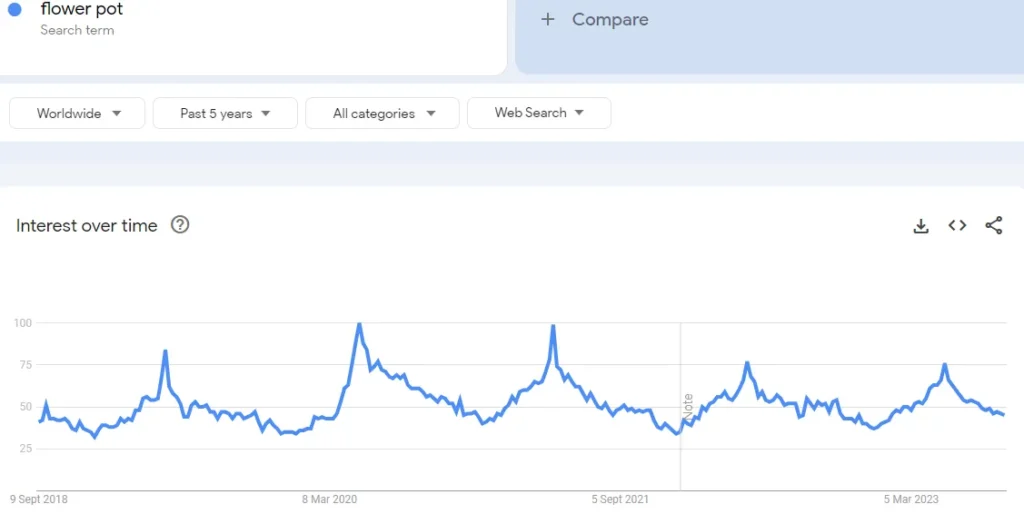
According to research by GlobeNewswire.com, the global planters market was valued at USD 572.60 Million in 2021 and is forecast to grow to USD 758.50 Million by 2028 at a Compound Annual Growth Rate (CAGR) of 4.10% during the forecast period.
This estimated growth indicates increasing demand for flower pots and planters in various industries, including gardening and landscaping.
How to start a flower pot business?

1. Develop your flower pot-making skill
To start a flower pot-making business, you need to develop your skills and expertise in the craft; by honing the required skills, techniques, and expertise, you can create the best pots that fulfill the market demand and stand out from the competition.
Learn different pottery techniques, like wheel throwing or hand-building, to make attractive designs or shapes. Practice, self-learning, mistakes, and learning from this are key to success.
Additionally, understand the properties of different clay types and glazes to produce durable and visually appealing flower pots that attract customers.
Skills needed for a flower pot business:
Making skills:
- Handcrafting skills such as sculpting, molding, weaving, casting, etc. Depending on material, style, and needs, you can create dependings.
- Design: Understand aesthetics, functionality, and plant needs.
- Construction: Gather knowledge of chosen materials and their properties, including proper curing, finishing, and waterproofing.
Business skills:
- Marketing: Know your target audience, pricing strategies, and promotion methods.
- Sales: Communicate with potential customers, build great relations, and prepare to sell your product.
- Finance: Accounting is a skill to manage finance properly, which is important for budgeting, cost analysis, and pricing.
Where can you learn the skills? To learn – practice yourself, watch online tutorials, join pottery classes or workshops, get training from experienced people, and seek professional guidance.
Also, many learning resources help you to develop your skills.
Resources:
- Websites: SkillShare, Udemy, YouTube Tutorials (free or paid).
- Local pottery studios: Take classes and workshops from offline resources.
For making pots, you need to gather the essential materials and supplies and buy them from a reputed supplier. Identify the best supplier for buying the quality material in bulk quantity.
Many types of supplies are required, depending on the flower pot-making needs and the type of pots you want to make; gather the necessary supplies.
Raw material for pots:
- Clay or terracotta
- Biodegradable materials
- Potting soil, fertilizer, seeds, or seedlings (if you sell with plant).
Equipment required to make pots:
- Potter’s wheel (if making clay pots)
- Molds (for making plastic or metal pots)
- Saws, drills, and other woodworking tools (for making wooden pots)
- Stone carving tools (for making stone pots)
- Gardening tools (for planting and caring for flowers)
Other supplies:
- Paints and finishes (for decorating pots)
- Labels and packaging materials
Potter’s wheel
Molds
Paints and finishes
2. Market research and customer analysis
Do your research to understand the market, flower pot type, target market, competition, and demand according to demographics or location and necessary stats.
With detailed research and planning, look to fill the gaps in the market where your unique flower pots can shine. Identify your target audience and potential buyers looking to buy flower pots for their homes, offices, and gardens.
Who are the target customers?
Your target customers can mostly be those who love to make a natural-looking garden with different pots and flowers.
Who buys flower pots? You can target everyone; these are the most useful decorating items for homes, offices, schools, hotels, renters, and gardeners; here is the list.
- Home gardeners
- Professional gardeners
- Nurseries and garden centres
- Homeowners and renters
- Restaurants and cafes
- Hotels and resorts
- Schools and educational institutions
- Retailers
- Online marketplaces
- Corporate offices
- Greenhouses and plant nurseries
- Hobbyists and crafters
- Wedding planners
Know your target customer:
Still, every customer has different preferences and needs; some want customized, well-designed pots, while some want normal.
So, the point is how you know who your target audience is.
Don’t worry; there’s also a solution for this.
People prefer to buy products online; every product type is listed on e-commerce platforms like Amazon, Walmart, and eBay.
Conduct research, check customer feedback, and find the best-selling pots.
Analyze the market:
You can analyze industry reports, customer buying, manufacturer selling reports, and competitor growth.
Identifying your target audience is the golden rule, crucial for creating a competitive product that customers want.
3. Create a flower pot business plan.
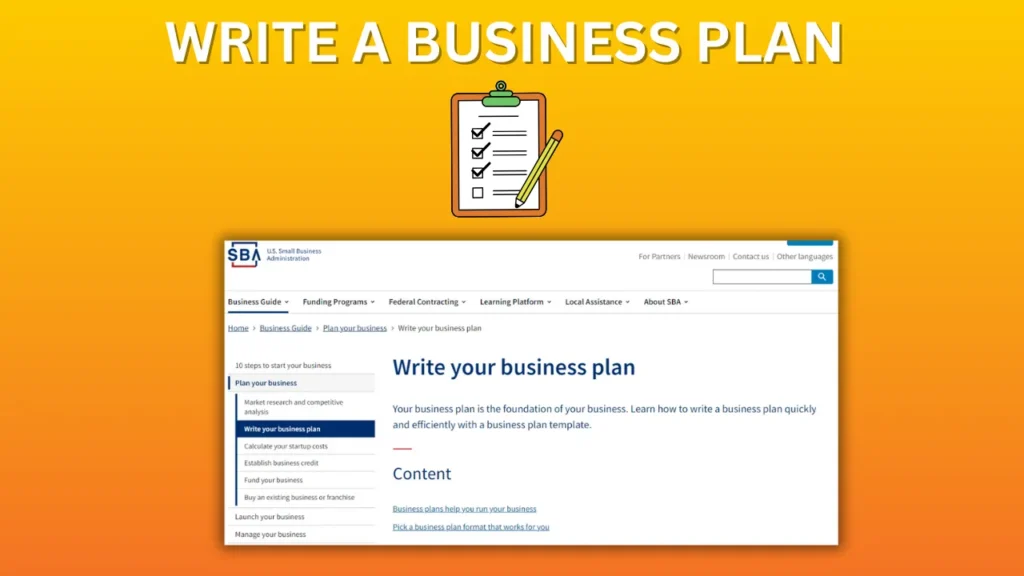
A business plan is essential for reaching goals and objectives and providing a roadmap for creating a business strategy and plan.
Before writing the plan, research different opportunities and challenges and consider the competitors, resources, differentiation, and growth plan.
If you don’t know how to create a business plan, you may consider learning online blogs or researching different impression sources.
Developing a well-thought-out business plan is important in establishing a successful business, focusing on a goal, and effectively implementing business ideas and strategies.
Outline your business plan:
- Business Summary: Briefly explain your unique pots and target audience.
- Product description: Describe your pots (materials, styles, any special features).
- Target market: Who are you selling to? Industry trends and your niche.
- Marketing plan: How will you reach customers, and what’s your pricing strategy?
- Skilled staff or team: Briefly introduce your core team and their expertise.
- Financial plan: Project key financial figures (sales, costs, funding needs).
- Growth plan: Briefly mention your long-term vision and potential exit strategy.
Include those given outlines and other necessary details related to the business idea.
4. Pick a flower pot business name
A business name is also important for creating a personal brand in your industry, so choose a creative name related to your product and service.
A memorable, attractive, flower pot-related, user-friendly name is a necessary part of your business to create a strong brand presence, and it is also helpful for business growth.
You can use business name generator tools or search for online business name lists to get some ideas and inspiration.
When you select a name, research and find a unique name that should not have already been taken; find non-copyrighted and the best name.
- Relevance: Research and find a flower pot-related name that reflects the brand identity and products, for example, Floral Fusions, Blooming Depot, or Floral Finesse).
- Memorability: Choose or create an easy name; 2-3 words are easy to remember; try to keep this word length for better SEO.
- Uniqueness: Confirm it’s not already in use; you can check the name by searching on the internet; ensure there are no social media handles or websites for this name.
- Check domain availability: When selecting, check whether a domain name is available. A domain is required for a web online presence; use Godaddy or Namecheap to check.
Once choosing a business name, register a domain for building an online presence by developing a user-friendly website (recommended for every startup).
5. Apply for license and permits

When launching your business, you must care about all legal aspects.
Register your business with the appropriate government agency, choosing the right business structure affecting legal requirements like taxation, permits, licensing, etc.
For registering your business, choosing a legal structure should be a priority; you can start with a sole proprietorship, partnership, or LLC, depending on the business size, budget, and goals.
- Pick your business structure.
- Choose a unique business name (already discussed in the previous section)
- Register with the government (depending on structure)
- Get the necessary permits and licenses.
- Register for federal and state taxes (consult a tax professional).
- Research others: zoning, environmental regulations, and labor laws (if applicable).
Obtaining the legal requirements depends on your state, local, and federal laws and regulations; make sure you first research, identify the need, and then apply for it.
You must obtain a sales tax permit from your state’s tax agency to sell flower pots, which allows you to collect and remit sales tax on your products.
Sales tax permits are not mandatory for anyone wanting to sell flower pots (depending on location, sales volume, and business structure). (note: consult a tax professional)
Obtain a federal tax ID or EIN (Employer Identification Number) from the IRS (visit the website and apply online), which is important when opening a bank account, taking out a business loan, hiring staff, and doing other legal activities.
Check with your state government website and other sources.
- US Small Business Administration (SBA) blog
Consult a business consultant, qualified lawyer or legal adviser for legal guidance to determine what licenses and permits are required.
7. Find a suitable working space
Finding the perfect workspace for your flower pot business is crucial.
Consider factors like size, location, accessibility, and rent affordability. Look for spaces that offer ample natural light and storage options.
Consider when selecting a location:
Size and layout:
- Space for storing raw material (clay, glazes, molds, tools, and finished pots).
- Workstation: Prepare the space with potter’s wheels, worktables, drying rakes, and kilns.
Budget:
- Buying a property can be expensive and require a significant down payment.
- On the other hand, you can rent a space to set up the workspace.
Location:
- If you have found a good location suitable for your business, then secure the location.
- For future expansion or growth, understand the requirements.
Zoning:
- Don’t forget to check zoning regulations and ensure the space meets your needs.
8. Marketing, selling, and promotion

When launching a new product, the difficult task is marketing and selling because you don’t have any potential audience base or targeted customers.
So, create a good marketing strategy to launch the product; if you want to target a huge user base, online marketing, promotion, and social media audience building are the best methods.
Sell your flower pots to potential customers with a proper marketing plan.
- Target and benefits:
- Know your ideal customer and understand their needs and how your pots benefit them (unique design, sustainability, etc.).
- Content is King:
- Share plant care tips, DIY projects, and beautiful product photos on blogs, social media, and collaborations.
- Content marketing is an easy way to share product details with your audience or customers.
- Create YouTube videos, write blog posts about your flower pot types and materials, showcase different designs, and influence your user to decorate their home with natural beauty.
- Social media promotion:
- Building a strong online presence on social media sites like Facebook, Twitter, Pinterest, LinkedIn, and Instagram is an easy and possible way for beginners.
- Be active on relevant platforms, share content or photos, use hashtags, and also, you can run targeted ads on Facebook or Instagram to build a reach.
- Partnerships and Promotions:
- Collaborate with stores, participate in events, and run special offers to attract buyers.
- Build an online partnership with YouTubers, craft vloggers, and social media influencers.
You can learn from online video tutorials or by reading blog posts to market a business.
Gain a solid understanding of marketing fundamentals, then conduct research, implement your strategy, experiment with different tactics, and track the effectiveness of your marketing efforts. Always be open to adopting new changes as needed.
Top method to sell flower pots:
- Sell on local markets and craft fairs, connecting with the local community.
- If you have a large production facility, sell to garden centers and plant shops in bulk.
- Create an e-commerce store to sell your products.
- Sell on online marketplaces (Etsy, Amazon, Walmart, or other platforms).
- Promote social media, engage your customers, and showcase your pots with them.
9. Create your online store
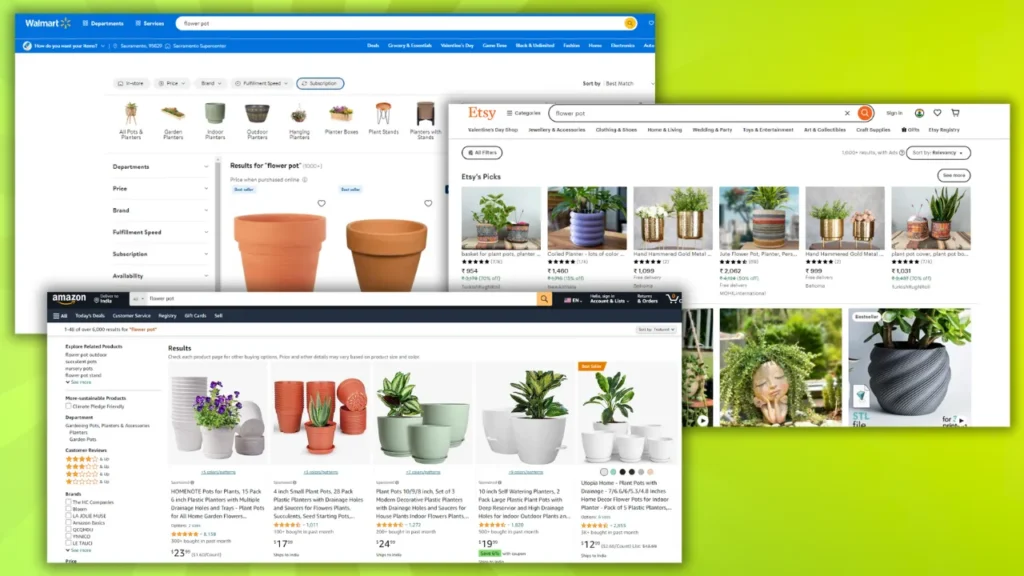
In the growing e-commerce online selling trend, you can expand your reach and boost sales.
Create a user-friendly website and sell your flower posts online. Focus on creating well-designed pots and providing your customers with the best shopping experience.
Selling at E-commerce website:
Selling products at e-commerce websites like (Amazon and Etsy) is a good idea. Still, there are some disadvantages. Understand the benefits and drawbacks before choosing a way.
- Benefits: Low platform fees, customer base, easy to market, simple logistic handling process, wide reach.
- Drawbacks: Low profit margins (due to fees and commissions on each sale), less branding, competition, dependence on platform policies, etc.
Steps to set up an e-commerce store:
- Choose an e-commerce platform
- Build your website: Design, product listings, payment processing, shipping setup.
- Market your store: Social media, SEO, ads, promotions.
- Fulfill orders: Manage packaging, shipping, returns, and customer service.
Create your online store:
Use popular e-commerce platforms (Shopify, eCommerce, Wix, and Squarespace) to create an online store to sell your flower pots.
- Benefits: Branding, high-profit margin, direct customer relation, flexibility, scalability.
- Drawbacks: Higher costs, marketing challenges, competition, customer service and logistics, and technical work.
Steps to sell on the e-commerce platform:
- Choose a platform: Etsy, Amazon, eBay
- Set up your shop: Create listings, manage inventory, and follow platform rules.
- Optimize your listings: Photos, descriptions, and keywords for search.
- Promote within the platform: Utilize tools and promotions offered.
- Manage orders: The Platform handles most logistics and provides good customer service.
Choosing the right approach depends on your resources (budget, time, technical expertise), target audience, product quality, and branding strategy.
Learning resources: read the blog posts.
Frequently Asked Questions (FAQs)
Here are some related questions and their answer; these are helpful for you to learn.
Is there a market for plant pots?
Yes, there is a large and growing market for plant pots. The plant pot market is segmented by material type, product type, distribution channel, and region. According to a research report by (alliedmarketresearch.com) the global flower planter market is projected to reach 1.5 US billion dollars by 2030 with a 4.3 CAGR growth rate.
What industry is flower pots?
Flower pots fall within the Home and Garden industry, specifically the Planters and Containers sub-industry.
What is the use of a flower pot?
A flower pot is a container for growing and displaying plants. It is mostly used in home gardening, home decoration, DIY projects, and outdoor decorations in residential and commercial houses.
How can I sell my flower pots online?
To sell online, start an eCommerce store or create your website and promote your store. And another way is to list the pots online (at Amazon, Etsy, and other online marketplaces).
Where To Sell Used Planters?
There are many places where you can sell used planters. Sell used planters online (eBay, Facebook) or locally (garage sales, classifieds). Donate in good condition, and responsibly recycle others. Must check local rules and regulations before selling.
Conclusion
So, you’ve learned the steps, fundamentals, and key steps of the business idea:
- Launch your flower pot product.
- Create an online store.
- Use a strategic marketing strategy.
Work with passion, never stop learning new skills, follow new market trends, and analyze your day-by-day operation to optimize for providing better products or services.
You can target retail stores, garden centers, and nurseries to sell your flower pots in bulk.
Manufacturing, distributing, and selling flower posts is a profitable and growing business idea; you can make money by selling them to the right customer.
I hope the post is helpful. If you have any other questions, then comment us below.
Read some related content:



